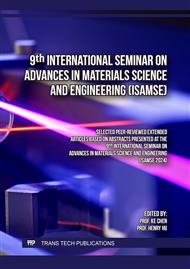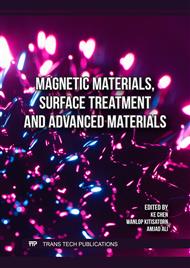p.29
p.39
p.47
p.57
p.63
p.75
p.83
p.93
p.101
Simulation for the Influence of Energy-Shaping Laser on the Geometry of the Phase Change Zone during Laser Quenching of AISI 1045 Steel
Abstract:
In this paper, invoking the mechanism of laser phase change hardening, the presence of latent heat of phase change, the temperature-dependent fluctuation of the thermal coefficient, and the disparity of microstructure austenitizing during rapid heating and static heating are duly reckoned. The repercussion of laser energy density distribution on the geometric configuration of the laser quenching phase change zone is probed via a numerical simulation model. Concurrently, the self-developed laser shaper is employed to modify the energy allocation of the conventional laser, and laser quenching is executed on the surface of AISI1045 steel with the spotlight subsequent to the shaper. Through the comparison of the cross-sectional area of the experimental sample phase change zone and the simulated phase change zone, the projected error ratio of the model established in this research is less than 10%.
Info:
Periodical:
Pages:
93-99
Citation:
Online since:
December 2024
Authors:
Keywords:
Price:
Сopyright:
© 2024 Trans Tech Publications Ltd. All Rights Reserved
Share:
Citation:



